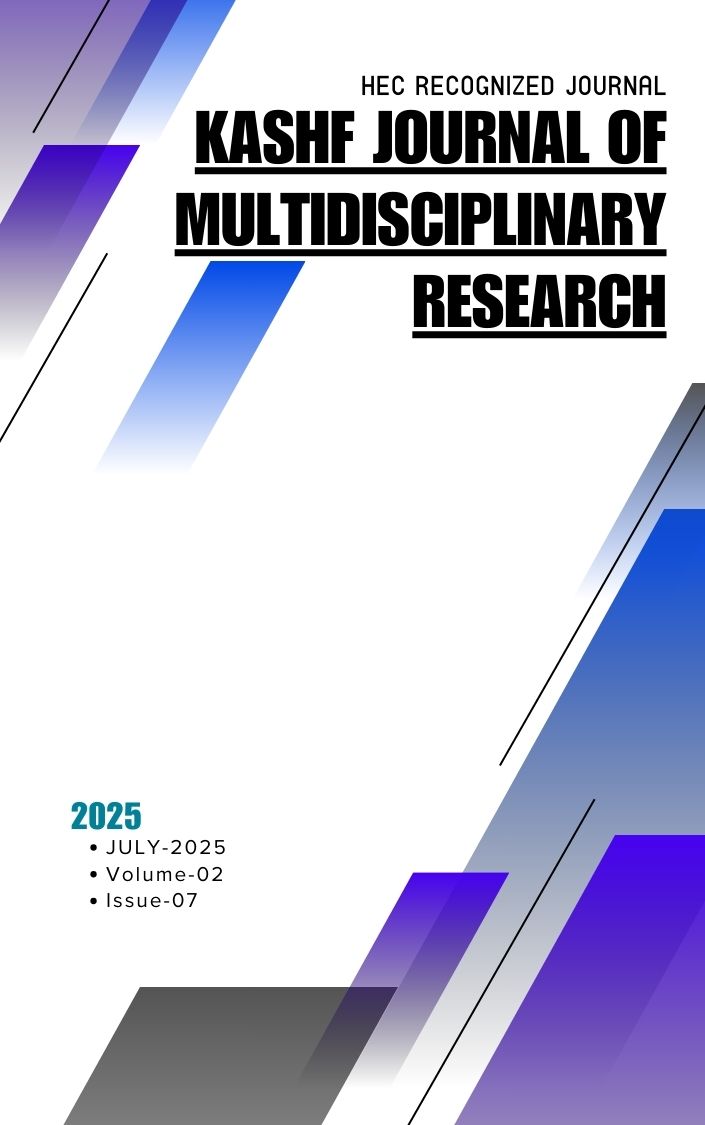REPRESENTATION OF SILENCE AND VOICE IN THE SELECTED NOVELS
DOI:
https://doi.org/10.71146/kjmr544Keywords:
silence, censorship silence, authorial silence, voiceAbstract
This paper discusses female silence and voice embodies in the selected Pakistani English novels namely The Holy Woman (2001) by Shahraz and Slum Child (2007) by Shah. Both the novels re-present sensitive issues of women marginalization in Pakistani society. This study examines that while dealing with the issues of women marginalization, whether the authors reinforce or challenge the gender stereotypes. To explore this, the present study applies Olsen’s framework of “Silences” on the target texts. This framework does not merely focus on silences while it further interplays with voice. Following this framework and close reading textual analysis method, this study explores the concept of censorship silence and authorial silence as the two specific tools used by the authors to represent the chemistry of gender issues together with class, religion, and other socio-cultural dichotomy. Further, this analysis assists the researcher in understanding how the female narratives constrained, restrained and/or rebel/resist against the norms. Finally, the study argues that both the authors struggle in speaking for women under socio-cultural and religious taboos.
Downloads
Downloads
Published
Issue
Section
License
Copyright (c) 2025 Sabah Zaib, Dr. Ume Kulsoom, Dr. Muhammad Khan Sangi (Author)

This work is licensed under a Creative Commons Attribution 4.0 International License.







